I wrote an SEO Tutorial some years ago (before using WP), the older search engine optimization tutorial is still very relevant, but like the rest of the world I moved on and now use WordPress as an SEO CMS.
Hence this free WordPress SEO guide.
WordPress SEO
WordPress out the box (vanilla WordPress with no WordPress SEO plugins or WordPress SEO theme) is pretty good from an SEO perspective, WordPress is a really good base SEO CMS for building optimized websites.
However, it is far from search engine optimized and it’s very easy to make on-page SEO mistakes within WordPress especially when using popular WordPress SEO plugins like Yoast WordPress SEO and All In One SEO Pack.
All the popular WordPress SEO plugins with millions of users advise using nofollow and noindex both of which are SEO damaging!
If you are a users of the Yoast or All In One SEO Pack plugins see the rel nofollow tutorial, you could be deleting over half your PageRank/link benefit by using an SEO plugin with the wrong settings!
WordPress SEO Plugins
I’m afraid you can not get maximum SEO from WordPress just by using a few WordPress SEO Plugins that changes the title tags and adds a few meta tags with a nice looking theme, you must use an entire WordPress SEO package like Stallion Responsive or have decent HTML/CSS/PHP skills to build your own SEO package.
If all you take away from my this WordPress course is go remove all your rel nofollow links and avoid using noindex (never use on categories or tags) you’ve taken a big step in the right direction SEO wise.
Best SEO Plugins
I’ve developed a couple of WordPress SEO plugins, although they are also part of the premium SEO theme I sell on this site these are free stand alone SEO plugins.
Stallion WordPress SEO Plugin
The Stallion WordPress SEO Plugin is a replacement feature for those using the SEO damaging nofollow and noindex features of plugins like Yoast WordPress SEO and and All In One SEO.
All the plugin does is give an option to not index parts of a site without wasting link benefit/PR (doesn’t do title tags or meta tags).
WordPress SEO Comments Plugin
The WordPress SEO Comments Plugin converts your comments into Google SEO entry points to your site. I use the blog SEO comments feature on this site and it’s resulted in over 3,000 additional webpages indexed by Google, to see it in action view the comments below and look to the links from the bottom right hand corner of the larger comments.
The above are just two of dozens of SEO features built into the Stallion Responsive WordPress SEO Theme Package.
Also writing a Yoast WordPress SEO Tutorial section to the site since there are so many WordPress SEO Yoast users.
WordPress SEO Training
WordPress Permalinks SEO : WordPress has the ability to set different formats for your WordPress posts URLs, in this SEO tutorial we cover the best WordPress permalink settings….
WordPress Site Title SEO : The WordPress Site Title Tag is very important for SEO, it’s set under your WordPress Dashboard “Settings” >> “General” : “Site Title”. What we add here will probably be added to the end of your Google SERPs titles, so it’s important to get it right…
WordPress Title Tag Optimization : When it comes to on-page search engine optimization there is no other single area of a webpage more important than the title tag. For this reason we have to make sure our title elements are search engine optimized when using WordPress, in this section of the tutorial we go into how to build the perfect title tags…
WordPress Meta Tags Optimization : This subject is a bit of an SEO joke in 2014 since Google doesn’t even use these meta tags for ranking purposes, so in some respects optimizing these meta tags is a of a waste of time. That being said lots of SEO consultants tout various services to optimize meta tags and so I have to cover it here so at least others know not to waste money on SEO services that indicate they will improve your Google rankings using meta tags…
Categories and Tags WordPress SEO Training : Best way to use WordPress is minimal categories/tags, majority of WordPress posts go in only one category (I don’t use tags because there’s no difference between a WordPress Tag and a WordPress Category). Understanding this SEO guide can help build SEO silo link structures quickly…
WordPress SEO Rel Nofollow : Many websites use the rel nofollow tag to prevent PageRank/link benefit from passing through links (AKA PageRank Sculpting), some of the most popular blog platforms and content management systems like WordPress, Drupal and Joomla automatically add nofollow links without webmaster interaction. Nofollow causes serious SEO damage, in this section of our SEO tutorial we cover how nofollow causes SEO damage…
WordPress Anchor Text SEO Guide : The anchor text of links is very important to Google search engine rankings, over the years as their algorithm has developed it’s importance has shifted, but it is still very importance for SEO 2014. In this section of the WordPress SEO course we look at how to effectively use anchor text…
WordPress Alt Text SEO Techniques : Alt text associated with images is very important SEO wise, Google uses it to associate SEO ranking to the image and to the page the link is on. By using simple search engine optimization techniques we can use optimized images to improve web search rankings…
WordPress Silo SEO : For those not familiar with the SEO silo concept, in a nutshell you try to theme or niche every part of a site to a specific content niche so as many of the elements on each webpage support THAT web pages SERPs NOT the site as a whole or other sections of the website…
WordPress SEO Canonical URLs : WordPress has the potential to mess up your websites SEO by generating archive pages (home archives, monthly archives, daily calendar archives, categories, tags and search results) with duplicate content…
WordPress SEO 301 Redirects : A permanent 301 redirect informs search engines and browsers (Firefox, Google Chrome, Microsoft Internet Explorer etc…) a page has permanently moved to a new location. A visitor to a website visiting via a link that’s been 301 redirected will click a link with one URL, but load another URL…
WordPress SEO Google XML Sitemaps : I’ve been building web sites and generating masses of free Google search engine traffic for over 10 years, in that time I’ve built the best WordPress SEO Theme available online and made tons of money, yet I’ve never generated or used a Google XML Sitemap…
WordPress SEO Related Posts Plugins : WordPress by default does not include the ability to automatically link related posts together. It’s unfortunate because the vast majority of Related Post WordPress Plugins I’ve tested (tested a LOT) get it wrong, not from an SEO perspective per se (most aren’t great SEO wise, but they are OK), but inefficient in the way they generate the related posts (poor PHP coding/database management) which is a performance SEO problem…
WordPress SEO Package
WordPress SEO is how I make a living online, used to provide SEO services (SEO consultant for over 10 years) and used to help make online businesses a lot of a money (millions of dollars) from Google organic search engine traffic and made a lot of money working as an SEO expert, but I knew I would do even better putting what I know into action on my own network of websites: over 100+ WordPress sites what many in Internet marketing call a Private Blog Network.
Why make others money using my SEO knowledge when I can make it myself.
Over the past decade or so I’ve put what I’ve discovered about on-page search engine optimization into a WordPress SEO package called Stallion Responsive, I use the SEO package on my own WordPress blog network (including this website).
If you want the best SEO theme for WordPress take a good look at Stallion Responsive and use this free WP SEO course to get the most out of on page SEO.
David Law
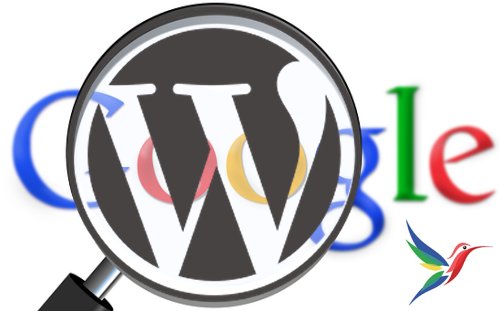

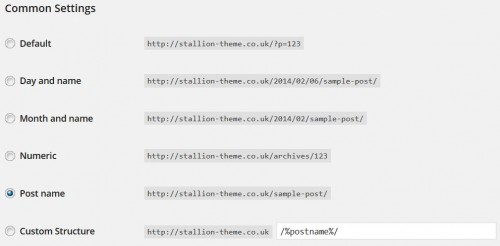
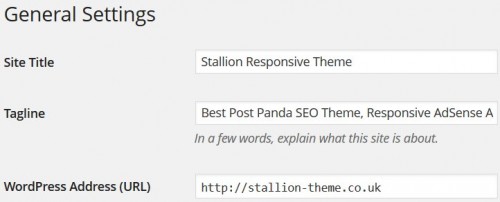

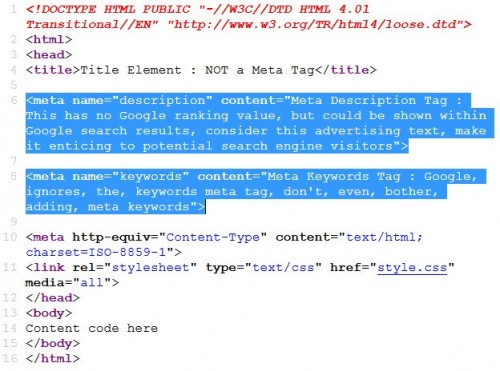
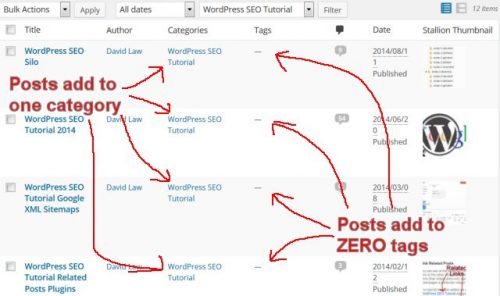
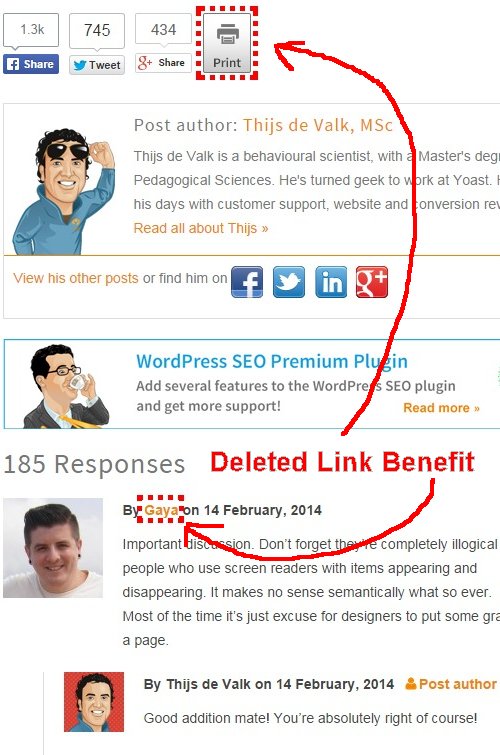
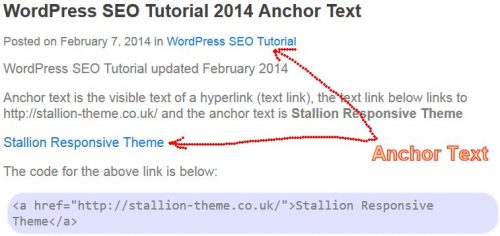
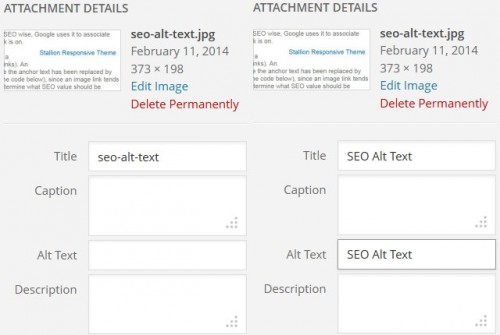
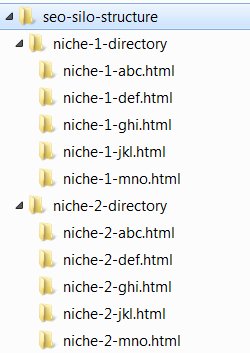
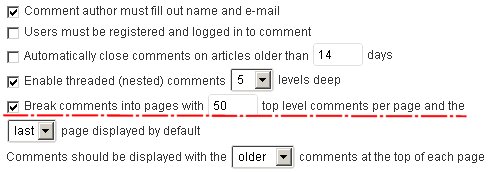

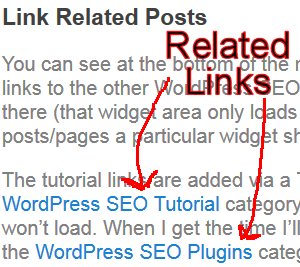
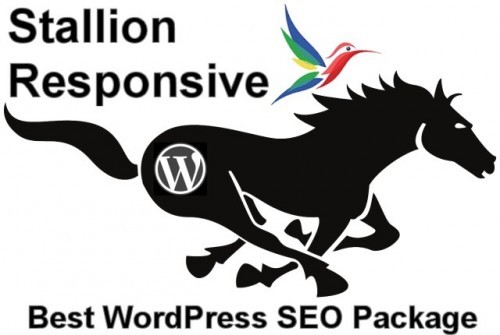
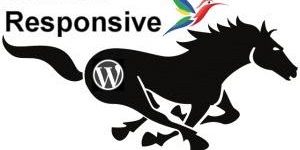
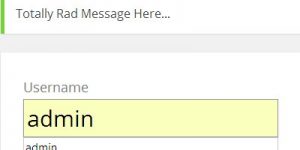
Font Size SEO?
Hi David,
I want to change the blog posts font style, size and space between lines for Stallion WordPress SEO theme.
Please help me on that..
And also want to know is the changing of fonts will affect my SEO??
SEO Impact of Font Sizes
That requires editing CSS files, each colour scheme and layout have their own CSS files, one for the colour scheme and one for the layout, the current two files your site uses are
So those are the two to edit, if you change to another layout/colour scheme the edits won’t work, you’d need to edit the relevant files for the layout/colour scheme. The font CSS are in the colour scheme CSS file. Easiest way to edit them is offline in a text editor (Notepad for example) and use FTP (Filezilla for example) to upload them. You’ll be looking to change instances of
Can be a lot of changes to make it work well, there’s no one change to achieve all text 10% bigger/smaller say. Don’t forget to have a backup in case you mess up.
It’s going to have no impact on SEO as long as you aren’t deliberately trying to hide something, so font size (within reason) are not going to have any negative SEO impact. If you try to make something like a H1 header look like normal body text it’s pushing it SEO wise, so if you change font sizes for H1 etc… try to keep them at the same sort of relative sizes to other font sizes, if you make main body text twice as big aim for similar for other fonts.
One BIG SEO mistake you’ve made, looks like you’ve deleted your sites title under your Dashboard “Settings >> General : Site Title” you should have something as the main sites title, as it’s a recipe site “Favourite Recipes” would be a good start. I guess you deleted it so the text link wasn’t over your header image, go to Stallion Theme >> Layout Options and tick “Original Site Title Link OFF”, that will hide the top link. If you do this you should also go to Appearance >> Widgets and add the “Stallion H1 Replacement” widget to one of the sidebars. When you hide the original site title link you loose an important H1 header on the home page, so I added a widget that replaces the H1 header on a sidebar instead.
David
SEO Impact of Font Sizes
Google Search Results Site Links?
Hi David,
I’m trying to understand how to set:
1.- Description for my Google results in stallion-theme.
For example I search for your site (stallion-theme), and I notice Google displays:
“Stallion V7.1.1 update released June 2012 – All Stallion Theme customers are entitled to a v7.1.1 free update, check your WordPress Dashboard for the built in”
It seems you set it for a page? How do I set it in Stallion?
2.- How do you make Google to display those two Hyperlinks underneath the Description… for example, in your site it shows:
On the left:
Stallion WordPress SEO Plugin
For Stallion SEO Theme users, the Stallion WordPress SEO Plugin …
On the right:
Stallion Theme Settings
Stallion WordPress SEO Posts Widget : Google Panda SEO …
How did you accomplish that and why?
Thanks a lot
Héctor
Google Search Results Site Links?
Google Sitelinks and Meta Descriptions Tag
for both questions I’ve not done anything special to achieve this, left it to Google to automatically set the meta description and the Google sitelinks. So what you see is what Google thinks are the best meta descriptions and sitelinks.
Stallion has no way to alter the Google sitelinks, see http://googlewebmastercentral.blogspot.co.uk/2011/08/introducing-new-and-improved-sitelinks.html
Stallion can have an impact on the Google Meta Description, on each edit Post page there’s a box to add a Meta Description Tag, if you add some text there it might be used by Google as that posts meta description (note MIGHT, Google doesn’t have to use it).
To set a home page meta description tag go to the Stallion All In One SEO Options page and there’s a box for adding a description there.
If the Stallion All In One SEO Options page isn’t active turn it on at the top of the Stallion SEO Advanced Options page. For the meta descriptions to show you have to have “Stallion All in One SEO ON” set on the Stallion SEO Advanced options page.
David
Google Sitelinks and Meta Descriptions Tag
Hide WordPress Tags on Archives for SEO Benefit?
Dave, was wondering whether to use the hide tags on archives pages feature. I get the feeling from what you’ve written above and elsewhere that it may be useful if you want to downplay the importance of those tag pages.
I likely have too many tag pages to begin with (something like 90) and I’d rather focus link benefit on certain other pages I’ve linked to in my header menu and footer.
I was wondering if there are any other effects to be aware of besides eliminating link benefit going to these tag pages from the archives pages. For example if having these tags visible is important for spreading link benefit throughout the site. Thanks for any thoughts you might have.
Erik
Hide WordPress Tags on Archives for SEO Benefit?
WordPress SEO Categories and Tags Optimization
I don’t use WordPress Tags because in structure they are the same as Categories.
A lot of webmasters overload their sites with Tags/Categories which means they need more link juice to power their sites SEO. You want most of your SEO benefit to find it’s way to the pages that gain SERPs, those tend to be the home page and single posts (articles). Look at your logs and determine do your Tags/Categories pull in search engine traffic (some will, most won’t).
So you want most link benefit to get to the articles. You can’t eliminate some form of navigation on a site (Categories/Tags), but limiting it makes sense because every Category/Tag will take more link benefit than your most important articles.
On many of my sites with a PR4 home page I tend to find the Categories (which I try to keep to a minimum) are PR3 (sitewide links to them) and most articles are below PR2 (NOT sitewide links) with those linked from widgets like the Popular Posts Widget PR3 (sitewide links). If I added even more Categories the amount of link benefit that would get to articles would be even worse.
If you have a lot of Categories/Tags and they aren’t needed (you need one Category or Tag for each article, not 20 Tags per article) look at ways to reduce them and not link to them so much.
David
WordPress SEO Categories and Tags Optimization
Whitehat SEO PageRank Sculpting by Reducing WordPress Tags
Thanks Dave, I know you’ve covered this before. A few of my tag pages actually rank quite highly for fairly important keywords, but as you say most do not. Collectively the bring about 3% of visits. You are right these tag and category pages tend to be among the higher Page Rank pages on the site.
My only reluctance is whether turning off tags on archive pages will hurt this albeit small segment of highly-ranking tag pages.
I already did a tag cull awhile back, but will look to reduce them more.
Whitehat SEO PageRank Sculpting by Reducing WordPress Tags
Whitehat SEO PR Sculpting : Delete WordPress Tags and Categories with NO Search Engine Traffic
If some WordPress tags get search engine traffic keep them and keep the same layout, but delete the tags that get no traffic.
This way your tags with traffic loose no internal backlinks and you waste no link benefit on tags that aren’t generating traffic, which means the important tags (and other pages on the site) gain more link benefit since less is wasted.
Same argument for categories, not much point having a tag or a category that doesn’t generate traffic OR doesn’t serve a spreading link benefit function: every post needs to be in one category or tag, ideally each category/tag would be limited to only 10 posts (or whatever number you set archives to show, doesn’t have to be 10) so they don’t go over to category page 2, page 3 etc… This maximises link benefit to all deep content assuming you have a sitewide widget of categories/tags.
Category One has a sitewide link and has no more than 10 posts (or the number you have it set to so it doesn’t go to page 2), this means all the posts in Category One are no more than 2 clicks away from home page and since all categories are linked sitewide all content receives a fair share of link benefit.
If you use a popular posts widget those posts will also have sitewide internal links, so will be no more than one link from home.
In practice it tends not to be this perfect setup, but if you keep it in mind you won’t go far wrong. If you want specific posts to gain more internal links so it ranks higher there’s custom menus where you can link to specific URLs to make sure they have more internal links.
This is whitehat SEO PageRank sculpting.
David
Whitehat SEO PR Sculpting : Delete WordPress Tags and Categories with NO Search Engine Traffic
WordPress Category Archives Distribute Deep Link Benefit
Excellent answer Dave. I have begun reducing tag pages.
I think part of my problem is that I have only 8 categories, and 1200+ posts.
The smallest category contains 40 posts, while the largest, very generic category has over 400. These are all currently displaying just 10 posts per page, so you are getting some categories that go for 40 pages or more into the abyss.
Is the answer to create numerous new category pages to split these out? I could probably come up with suitable new categories using keywords, and reassign posts from these big categories to the new categories.
This would have the effect of adding a lot of category links in my sidebar widget (thus reducing link benefit to other links I’ve deemed important).
But I suppose it would distribute link benefit more deeply through the site (on your advice from this previous discussions) I don’t display tags in any site-wide widget so benefit is not flowing in that manner).
A second issue then is deciding how many posts to display per category/tag page.
It looks like there are plugins or other hacks that can be used to display a specific number of posts per page (I’d like to keep my main index page just showing the standard 10, but increase the tags/categories).
Is there an upper limit for how many posts should be displayed on a page?
I realize you might not have a specific answer, but is it reasonable to have a category page with, say, 50 or more post excerpts on a single page?
Many thanks
Erik
WordPress Category Archives Distribute Deep Link Benefit
WhiteHat SEO PR Sculpting : WordPress SEO of Categories Siloing
1,200+ posts in only 8 categories averages at 150 posts per category IF you have them spread evenly (which you won’t).
With the standard 10 posts per category that’s 15 pages deep, unless you have a high PR site (loads of backlinks) there’s a very good chance a significant amount of your deeper content rarely sees a search engine spider (can’t find them, some content will be over 10 clicks from home!).
I try to keep the number of posts shown in a category to under 20 and try to keep the number of page 2, 3 category to as low as possible and of course don’t forget about siloing your categories (keep the posts within a category to a strict theme). With your site for example I’d rather have 30 categories with on average 40 posts a category with the number of posts shown per page set to 20 which would result in most categories going 2 or 3 pages deep than your current setup of 15 pages deep.
This would have a sitewide impact, posts that are currently getting very little link benefit will get significantly more and those that get most link benefit could see significantly less. So there’s going to be ups and downs in current SERPs, I would recommend compiling a list of the pages that gain most traffic and add them to a custom menu and add them as a sitewide widget so they don’t loose their current internal backlinks. Basically if you have a post that with your current setup has a sitewide link and you change it so it only has one link from page 2/3 of a category it might loose rankings.
I bought this site a Mobile Phone Reviews site last year and reorganised it.
157 posts
10 categories
15 posts shown in a category and I tried to silo the theme of the category.
Categories range from 8 to 15 posts per category (most are around 10-12) meaning there are no page 2 categories.
Since I own over 100 domains I don’t have the time to spend reorganising sites to the level I’d suggest for a webmaster with one site. If I had the time I’d push posts that gain no search engine traffic because they aren’t really targeting SERPs into categories with more than the ideal number of posts so they get even less link benefit. I’m sure you have lots of posts that don’t really target anything, in a perfect SEO world they either need targeting at some SERPs (a rewrite which takes time) or partially removed from the site so they don’t waste too much link benefit and don’t water down the siloing of the categories they are linked from.
For example if you went with around 20 categories, 20 posts per archive page and designate 4 categories to push less important posts into (100 posts per category for example) the number of posts in your ‘important’ siloed categories that are targeting SERPs is dramatically reduced: 400 posts in the unimportant categories means 800 in the important categories, 800 posts into 16 categories = 50 posts per category, if set to 20 posts shown per category it averages 3 pages deep which is similar to having 30 categories and evenly spreading all posts. In the real world you won’t get perfect numbers, keep them in mind and will help spread link benefit more efficiently.
What is Siloing? Not familiar with link siloing, basically you theme an entire site or section of a site (I do the latter) so it only links to related content. WordPress categories are ideal for siloing, try to avoid adding unrelated content to any of your important categories. You can also see from this why I avoid the over use of tags, many WordPress users will add their posts to 5+ tags and by doing this there is no siloing within the tags.
David
WhiteHat SEO PR Sculpting : WordPress SEO of Categories Siloing
How to Increase Google Search Engine Traffic
Google is striving hard to give its users the best possible results to increase their user experience and tend to adjust their search algorithm accordingly so that they bring out the best possible results to its users. Now there is a new algorithm that is implemented in Google and they even got the patent permission for it and the algorithm works like this.
Just try to remember that there may be times when you do want to search for something and when you don’t find what you are looking for in the first term then you move on to another search related search term to find out what you are looking for?
Ok I know its a bit complex to understand so let me point out an example. If you are searching for some tips on SEO for your blog and you make a query called “seo tips for blogs” and you don’t find what you are looking for and then you move on to another related search term like “best seo tips for blogs” and then again you move on to another search term like “top seo tips for blogs” and then you click on a search result.
So just imagine there are millions of people who are using Google search engine to search for information they need so there might be a significant number of people who might have made a similar query like you in the same pattern so these query patterns are taken into consideration and also Google looks for the page which got the most clicks in this particular search pattern so just imagine your site got more clicks in the above mentioned search pattern then Google will adjust the rankings of this particular index so that users finds out what they are looking for.
Rand
How to Increase Google Search Engine Traffic
WordPress Tags and Categories Noindex Subpages
i want to know about keeping tag and categories to index and follow and subpages to no-index and follow can be helpful?
or may get penalized for duplicate content?
How to Noindex Paged WordPress Categories and Tags
Before I explain how to noindex paged categories and tags, first going to cover some basic SEO misunderstandings.
If you use a WordPress theme like the Stallion SEO Theme your tags, categories and other WordPress archives will use post excerpts. Have archives with post excerpts is not going to cause a duplicate content penalty. Millions of websites run WordPress and most will have categories with excerpts and many will have full posts.
If your WordPress theme has full posts on categories this is a bad idea, not for duplicate content issues (Google is smart enough to determine which is the main article), but pagespeed issues, loading 10 full posts on a webpage (category, tag etc…) is a bad SEO idea. Noindex won’t stop the wasted resources when Google spiders a category with 10 full posts, same when your visitors view them.
If your WP theme shows full posts either modify the theme or change WordPress themes.
If you theme uses post excerpts on categories etc… it’s not an issue.
The noindex,follow robots meta tag. If you use a WordPress plugin like Yoast WordPress SEO it has options to noindex,follow archive sections of the site.
This is a bad SEO idea, noindex,follow a page means Google won’t index the category, but will pass link benefit to the links from the category. What this means is Google won’t index the categories, but will still follow links from them. There is no good reason to do this, it means your categories can’t rank for anything!
Your categories and tags are webpages just like any other webpage, they can generate traffic in their own right, by using Yoast WordPress SEO you deny your website webpages that could generate traffic!
Noindex still costs the link benefit Google would have used to rank your categories etc… for relevant SERPs, so you aren’t saving the link benefit for your posts, it’s wasted by using noindex.
So don’t use noindex on categories or tags.
The Stallion Theme and the Stallion WordPress SEO Plugin (it’s free) has a feature like noindex (I call it Not Index) which uses canonical URLs to do exactly what the commenter above asks for. Index the first page of a category, not index the category paged sub-pages.
The difference between noindex and Stallion Not Index is when you Not Index the canonical URL acts like a 301 redirect on the paged categories redirecting the link benefit back to 1st page of a category (same for tags and other archives).
From an SEO perspective there is an argument minimizing link benefit used on paged archives makes sense, so this can recover the link benefit that would be poorly spent on paged categories and tags. On most themes (not the Stallion theme) the paged archives have the same title tags etc… as the 1st page of a category, so you only need one of them indexed: Google tends to rank the best linked URL which will be page 1 of a category, not page 2, 3, 4…
The Stallion theme includes a feature to give category page 2, page 3 etc…. a unique title tag, H1 header and links, so you can target multiple SERPs on a set of category sub-pages. So on this site I don’t use Not Index, I set unique titles for category sub-pages and target more SERPs.
David
How to Noindex Paged WordPress Categories and Tags